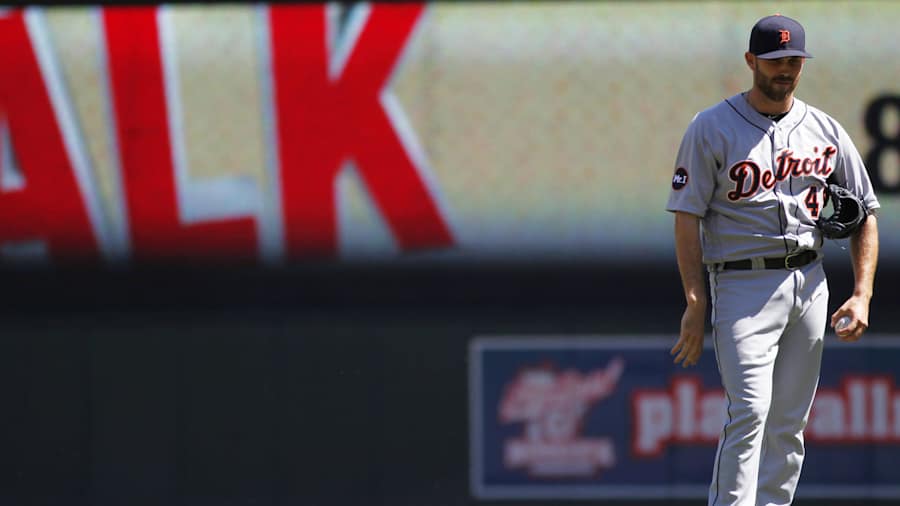DETROIT – Matt Boyd, the lone bright spot of the Detroit Tigers' season, turned in a second-straight terrible start Tuesday, leaving fans to wonder if general manager Al Avila made a mistake by holding onto Boyd at the trade deadline.
There were at least a dozen teams linked to Boyd in the weeks leading up to the deadline, but by all accounts, the Tigers' asking price was far too high. There were certainly reasons for Avila to have a high asking price, but as the season wears on, Boyd's numbers look less and less impressive.
Recommended Videos
Boyd has pitched only eight innings over his last two starts, allowing 11 earned runs on 13 hits and five walks. Over the past two months, Boyd was at least missing bats when he gave up runs, but he only has five strikeouts and 15 swinging strikes in his last two starts.
This isn't just a bad two starts for Boyd, either, though it's the first time he's gone back-to-back outings with fewer than 10 swinging strikes.
Since the start of June, Boyd has made 13 starts for the Tigers and only three have registered as quality starts.
In that span, Boyd has allowed 48 earned runs and 23 home runs in 73.1 innings. His ERA is 5.89 and his WHIP is 1.36.
The strikeouts have still been elite since the start of June, as Boyd has whiffed 104 batters and maintained a 15% swinging strike rate. But hitters have a monstrous .877 OPS against him across a 13-start stretch, which is nearly half a season.
Early in the year Boyd looked like a bona fide ace. Now, he looks like a great strikeout pitcher with a massive home run problem who's been much more hittable for 2 1/2 months.
Tigers fans might be a little nervous considering what happened just two years ago with Michael Fulmer. At the time, Fulmer was the reigning American League Rookie of the Year and in the midst of an All-Star season. Teams were reportedly offering exciting prospect packages for Fulmer, but the Tigers wouldn't budge.
There were signs that Fulmer was overperforming, and regression came in the second half of 2017. He was much less effective last season and had Tommy John surgery before this year.
It's clear the Tigers missed out on an opportunity to add an impact offensive player in exchange for Fulmer at the 2017 deadline. Is that happening again with Boyd?
One major difference is that the underlying numbers favor Boyd. He's striking out nearly 12 batters per nine innings with a low walk rate. The only true knock on his performance is the home run rate, which, unfortunately, isn't significantly higher than his career mark.
Considering home runs are being hit at an all-time high this season, it's no guarantee that Boyd's home run numbers will regress. If that's the case, Boyd won't fetch an elite prospect for the Tigers to build an offense around.
But there's still plenty of reason for hope with Boyd. Two years ago, he was a 26-year-old who had never averaged more than 7.6 strikeouts per nine innings with the Tigers. Now, he's among the top strikeout pitchers in baseball.
If he can build off the positives from early in the season and adjust to give up fewer home runs, the numbers will settle back into the realm of a borderline ace.

Whether or not teams are willing to part with a top prospect for three more years of Boyd remains to be seen, but that could be more about the changing landscape of baseball than the outlook on Boyd's future.
Boyd needs to finish the season on a strong note to have significant trade value in the offseason, but it's not time to sound the alarm just yet.
/**/


